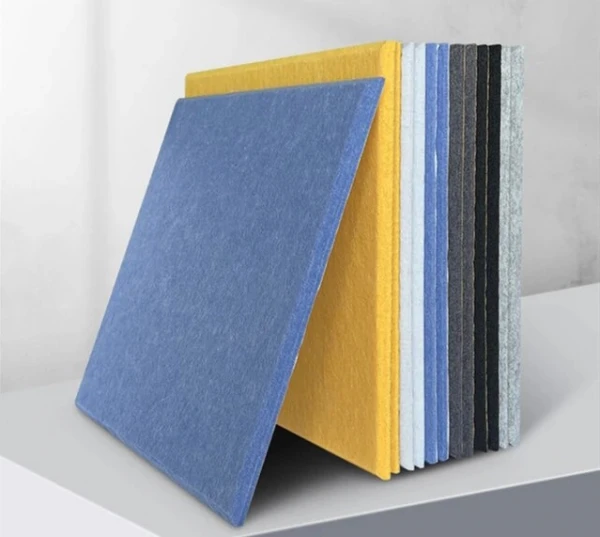Studio Soundproofing Panels
$48.00
$105.00
$149.00
$249.00
Setting up a great recording space isn't just about having top-tier equipment. The way sound behaves in a room can make all the difference, and studio soundproofing panels are key to getting it right. Whether you’re a musician, podcaster, or producer, using acoustic panels for studio spaces helps cut down on unwanted noise and brings clarity to your sound.
Why Acoustic Panels Matter in a Studio
Sound waves bounce off hard surfaces, creating echoes and unwanted reverberations. This interference can affect recordings, making them sound less professional. Studio soundproof panels work by absorbing these sound waves, preventing them from bouncing around the room and distorting the audio quality. With the right panels in place, the acoustics of the space become more controlled, resulting in a cleaner, more natural sound.
Using recording studio soundproof panels helps ensure that vocals and instruments sound crisp and well-defined. These panels make mixing easier and improve overall sound separation by minimizing excess noise and echo. As a result of which we have a professional, polished recording that captures every detail with precision.
Types of Studio Acoustic Panels
Inner-Frame Panels
Inner-frame panels are built for durability and performance. A sturdy frame surrounds dense acoustic material. These panels are highly effective for mid-to-high-frequency sounds. They work well in professional studios that require long-lasting soundproofing.
Frameless Panels
Frameless acoustic panels offer a sleek design with strong noise reduction. They are made from dense acoustic foam or fabric-covered insulation. These panels absorb sound effectively without adding extra bulk. They are great for home studios or office spaces where both function and aesthetics matter.
Special Shape Panels
Special shape panels combine style and functionality. They come in hexagonal, circular, or custom shapes. These panels help scatter and absorb sound. They also add visual appeal to a recording space. They are useful for reducing harsh reflections and balancing sound.
Wood Acoustic Panels
Wood acoustic panels blend natural aesthetics with soundproofing capabilities. These panels use slatted wood over an absorbent core, balancing sound absorption and diffusion. Ideal for professional studios, they help maintain a natural sound without completely deadening the room.
Where to Place Studio Soundproofing Panels
Correct placement of studio soundproof panels maximizes their effectiveness. Consider these main areas:
- First Reflection Points: The spots where sound waves first hit walls and ceilings should have panels to reduce initial reflections.
- Corners: Bass traps in corners help control low-frequency buildup.
- Behind the Speaker Area: Absorbing reflections behind monitors improves sound clarity.
- Ceilings: Overhead panels help manage sound bouncing from above, especially in vocal booths.
Acoustic Panels for Your Studio
Selecting the best acoustic panels for studio environments requires careful consideration. First, determine the specific needs of your space. A vocal booth might require more absorption than a mixing room, which benefits from a combination of absorption and diffusion. The density of the material makes a big difference. Heavier panels absorb lower frequencies better, this keeps bass buildup under control and prevents unwanted sound distortion.
Aesthetics also play an important role in choosing the right panels. Whether you prefer sleek, frameless designs or the warm, natural look of wood acoustic panels, there are plenty of options to match your studio’s decor. Using a mix of different panel types ensures a balanced acoustic environment by effectively managing both reflections and diffusion.
Finally, consider whether you want professional-grade panels or DIY options. While homemade solutions can be cost-effective, professionally designed panels typically provide more consistent results and long-term durability.
Enhancing Your Studio Soundproofing
Investing in recording studio soundproof panels is essential for achieving professional-quality recordings. By choosing the right materials and placing them strategically, you can control sound reflections, reduce unwanted noise, and create a more accurate listening environment. Whether you are setting up a home studio or upgrading a professional space, studio soundproofing panels are a key element in getting the best sound possible.
FAQs
Frequently Asked Questions. Here are some common questions about Acoustic panels.
What are acoustic panels for studio, and how do they work?
Acoustic panels for studio spaces are designed to absorb sound reflections, reduce echo, and improve overall sound clarity. They work by trapping sound waves before they bounce off hard surfaces, helping to create a more controlled and professional recording or mixing environment.
Where should acoustic panels be placed in a studio for the best results?
The placement of acoustic panels for studio depends on the layout and purpose of the space:
-
Recording studios: Panels should be placed at first reflection points on walls and ceilings to ensure clean, accurate recordings.
-
Mixing rooms: Position panels behind and around the mixing console to create a balanced listening environment.
Rehearsal spaces: Evenly distribute panels to control overall room acoustics and reduce unwanted noise buildup.
What is the difference between sound absorption and soundproofing in a studio?
Sound absorption improves audio clarity within the room by reducing echoes and reflections. Soundproofing prevents sound from entering or leaving a space. Acoustic panels for studio focus on absorption, while materials like mass-loaded vinyl, acoustic insulation, and door seals are used for soundproofing.
What types of acoustic panels are best for a studio?
-
Fabric-Wrapped Panels: Ideal for vocal booths and control rooms, offering high sound absorption.
-
Foam Panels: Lightweight and cost-effective, commonly used for budget-friendly setups.
-
Bass Traps: Placed in corners to control low-frequency buildup.
Diffuser Panels: Used to scatter sound waves for a more natural acoustic balance.
Do acoustic panels for studio completely block outside noise?
No, acoustic panels for studio absorb sound within the room but do not prevent external noise from coming in. For full sound isolation, additional soundproofing materials are needed.
How do acoustic panels improve studio sound quality?
By controlling reflections and reducing unwanted noise, acoustic panels for studio help create a clean and balanced sound environment. This improves recording clarity, prevents frequency buildup, and ensures accurate playback in mixing and mastering sessions.
Can acoustic panels be used in home studios?
Yes, acoustic panels for studio setups are highly effective in home recording spaces. They help compensate for room imperfections and prevent sound coloration caused by reflections from untreated surfaces.
How do I choose the right acoustic panels for my studio?
Consider these factors when selecting acoustic panels for studio:
-
Studio size: Larger rooms require more panels for even sound control.
-
Sound treatment needs: Vocal booths need mid- and high-frequency absorption, while mixing rooms require full-range treatment, including bass traps.
-
Aesthetic preferences: Choose from various colors and textures to match your studio’s look.
Can acoustic panels be customized for studio aesthetics?
Yes, acoustic panels for studio are available in different colors, patterns, and custom-printed designs. Many studios integrate panels as part of their visual branding while maintaining sound quality.
Are acoustic panels easy to install in a studio?
Most acoustic panels for studio come with simple mounting options, including adhesive strips, wall brackets, or ceiling mounts. Professional installation is recommended for precise placement, but many DIY solutions also provide great results.
How do I maintain acoustic panels in my studio?
Regular dusting or light vacuuming helps keep acoustic panels for studio clean. Fabric-covered panels should be wiped with a damp cloth, and foam panels can be gently brushed to remove dust.
Are acoustic panels for studio a worthwhile investment?
Yes, acoustic panels for studio improve recording quality, eliminate unwanted reflections, and enhance the accuracy of sound reproduction. Whether for a professional recording space or a home setup, proper acoustic treatment is essential for achieving high-quality audio.
Where can I buy high-quality acoustic panels for studio in New York?
Sound Pro Solutions offers premium acoustic panels for studio in New York, providing expert consultation, custom options, and professional installation. Contact us today to optimize your studio’s sound environment.




